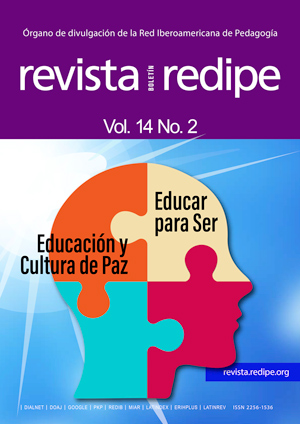Peace constructions in Colombia
Main Article Content
Keywords
Violence, Peace, Culture of violence, Culture of peace
Abstract
One of the most representative milestones in national history has been the signing of the peace agreement in 2016 between the national government and the FARC-EP, and the commitment of Colombian society in the search for the construction of a durable and sustainable peace. The research work makes a journey from various theoretical contributions of the concepts of peace and culture of peace, taking as a reference interpretations of violence, cultural violence, their concepts in modernity and postmodernity, to support the dynamics and daily activities of Colombian society, highlighting the need and importance of the role of research and education as a tool in the permanent process of building a culture of peace. In this way, the points addressed are also concerned with understanding that conflict will always exist, but that peace is possible if the resolution of the problems focuses on the transformation of situations of inequality and inequity, starting by giving primacy to the mechanisms of dialogue, exchange of knowledge, debate, discussion in various participatory social, political and cultural spaces, as well as within the various spaces of the academy.
References
Bobbio, N. (2004). El problema de la guerra y las vías de paz. Gedisa.
Fisas, V. (1998). Una cultura de paz. En: Cultura de paz y gestión de conflictos. Icaria/ Unesco.
Galtung, J. (2003). Paz por medios pacíficos, Paz y conflicto, desarrollo y civilización. Gernika Gogoratuz.
Galtung J. (1964). An editorial. Journal of Peace Research, 1 (1), 1- 4. Citado por Harto de Vera (2016).
Galtung J. (1969). Violence, peace and peace research. Journal of Peace Research, 6(3),167-191. http://www2.kobe- u. ac.jp/~alexroni/IPD%202015%20 readings/IPD%202015_7/Galtung_ Violence, %2 0Peace, %20and%20 Peace%20Research.pdf
• Galtung, J. (1976). Three Approaches to Peace: Peacekeeping, Peacemaking, and Peacebuilding. Peace, War and Defense: Essays in Peace Research, Vol. II, Copenhagen: Christian Ejlers. http://graduateinstitute.ch/files/live/ sites/iheid/files/sites/international_law/ users/ves%20sier9/public/Galtung%20 %20Three%20Approaches%20to%20 Peace.pdf
• Galtung, J. (2016). La violencia: cultural, estructural y directa. Cuadernos de Estrategia, 183, 147-168.
• Harto de Vera, F. (2016). La construcción del concepto de paz: paz negativa, paz positiva y paz imperfecta. Cuadernos de estrategia, 183, 119- 146. https://dialnet.unirioja.es/servlet/ articulo?codigo=5832796
Lipovetsky, G. (2003). La era del vacío. Editorial Anagrama.
Maldonado, N. (2007). La colonialidad del Ser. En S, Castro y R, Grosfogel (Ed.), El giro Decolonial. Bogotá: Universidad Central.
UN General Assembly/Security Council. (1992). An Agenda for Peace: Preventive Diplomacy, Peacemaking and Peacekeeping, A/47/277 - S/24111. Nueva York: Naciones Unidas.



